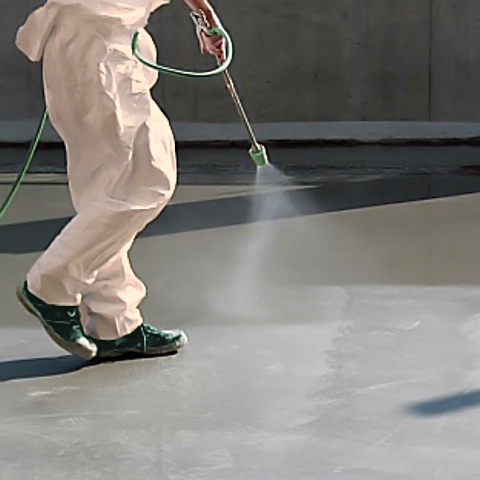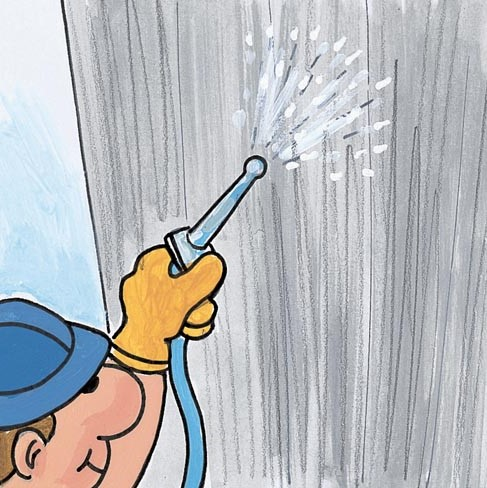Fields of application
Aid for curing and curing measures in concrete conglomerates: industrial concrete floors, foundation slabs, massive jets, betons, thixotropic and castable structural mortars, fiber-reinforced micro-coals etc.
Allowed supports
Concrete
Prefabricated concrete
Fiber-cement
Mode of use
Curing Aid must be applied to the surfaces of fresh mix, preferably by spraying, using low pressure sprayers. Curing Aid can also be rolled out but in this case it is advisable to wait for it starting phase and first surface hardening (losing part of its effectiveness).
In case of particularly unfavorable exposure conditions (dry and / or windy environment) it may be necessary repeat the application.
Curing Aid is not a hydro-oleo repellent substance. Curing Aid bases its operating principle on cross-linking of a copolymer with excellent stability under alkaline conditions, which inhibits water evaporation by chemically fixing with the support.
Curing Aid, thanks to this process of polymerization and tenacious adhesion on the surfaces of the conglomerate, it is not a potentially detaching substance with respect to subsequent coating treatments.
It is understood that an excess of mixing water in the concrete design mix, with an attached phenomenon of bleeding, it can affect correct Curing Aid polymerization and create a non-perfectly linked crosslinking with the support. Therefore it is always advisable to check the degree of compactness of the surfaces and, in case of doubt, proceed with an effective cleaning before carrying out any superficial painting.
The operations of sanding, dust removal and in general of preliminary cleaning are, however, always recommended in all the codes of good practice concerning the painting and coating of industrial floors.
The use of the curing adjuvant does not exempt from the adoption of normal protective measures, where necessary (covering products with sheets of polyethylene, in non-woven fabric, jute bags, prolonged wetting, etc.).
It is not a pigmentation, after the application it is transparent.
Application methods
Low pressure airless nebulizer
Technical specifications
Viscosity
UNI 8701-3 a 20°C
17.5 cP
Consumption
From 0.07 to 0.1 kg of Curing Aid per square metre of surface to be treated, based on the porosity and absorption of the surface itself.
Packaging and dimensions
Plastic can 25 kg
Pallet tank (IBCs) 1000 kg
Storage and conservation
Protect from freezing.
Warnings
The general information, along with any instructions and recommendations for use of this product, including in this data sheet and eventually provided verbally or in writing, correspond to the present state of our scientific and practical knowledge.
Any technical and performance data reported is the result of laboratory tests conducted in a controlled environment and thus may be subject to modification in relation to the actual conditions of implementation.
Azichem Srl does not assume any liability arising from inadequate characteristics related to improper use of the product or connected to defects arising from factors or elements unrelated to the quality of the product, including improper storage.
Those wishing to utilise the product are required to determine prior to use whether or not the same is suitable for the intended use, assuming all consequent responsibility.
The technical and characteristic details contained in this data sheet shall be updated periodically. For consultation in real time, please visit the website: www.azichem.com. The date of revision is indicated in the space to the side. The current edition cancels out and replaces any previous version.
Please note that the user is required to read the latest Safety Data Sheet for this product, containing chemical-physical and toxicological data, risk phrases and other information regarding the safe transport, use and disposal of the product and its packaging. For consultation, please visit: www.azichem.com.
It is forbidden to dispose of the product and/or packaging in the environment.









